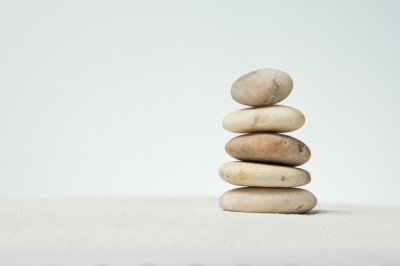 Sadhana is an ancient yogic tradition, most commonly translated as, “a means of accomplishing something.” In Sanskrit, the word is slightly different, ‘sa’ meaning ‘all’ or ‘infinite,’ ‘dhana’ meaning ‘blessings.’ Typically performed during the “ambrosial hours,” or the two hours just before sunrise, it is an intentional practice involving yogic movement and/or meditation.
Sadhana is an ancient yogic tradition, most commonly translated as, “a means of accomplishing something.” In Sanskrit, the word is slightly different, ‘sa’ meaning ‘all’ or ‘infinite,’ ‘dhana’ meaning ‘blessings.’ Typically performed during the “ambrosial hours,” or the two hours just before sunrise, it is an intentional practice involving yogic movement and/or meditation.
Practicing Sadhana is one of the oldest ways to change your entire being simply by changing your thought patterning.
Research into quantum psychics in neuroscience and neuropsychology has taken us beyond the mechanical laws of Newtonian physics, increasingly supporting the theory that our thoughts and habits impact us on a cellular level. A study done on bacteria as early as 1988 by British molecular biologist John Cairns proved definitively that even primitive organisms can evolve consciously. These days, Bruce Lipton, Phd., cellular biologist and author of The Biology of Belief and Spontaneous Evolution, is one of the leaders in in the new field of epigenetics, the link between mind and matter and the effects on our personal and collective lives. His breakthrough research has shown how our bodies and ultimately our lives can be changed as we retrain our thinking.
How do I do this?
Yogi Bhajan said, “Develop a regular sadhana and you take control of your life. Develop a deep sadhana and you open the doors of experience. Commit to meet your higher Self each morning and your decisions and your life become original; your life will bear the signature of your soul; your radiance will express the meaningful intimacy of the Infinite in each moment. Immerse yourself in the joy of victory that comes from starting each day with a powerful sadhana and every challenge becomes opportunity.”
First, choose a practice. It could be any practice you’d like in order to create a routine. It may be as simple as lighting a candle then blowing it out, using a neti pot, or doing 3 sun salutations (the heart of a flow yoga practice)– anything that is not part of your mechanical routine (getting dressed, brushing your teeth).
Whatever practice you choose, incorporating mindfulness during this time can make a huge impact. This doesn’t mean controlling your mind, but instead, simply stepping back, noticing your thoughts and emotions in the moment and letting them come and go without judgment while you are in a relaxed and focused state. Studies link such a practice to everything from lowering your risk of heart attack and stroke to adding folds to your brain’s cerebral cortex for faster information processing.¹
Then, commit to a regular time. It doesn’t necessarily have to be morning. It doesn’t even have to be everyday, as long as it’s regular (every Monday,Wednesday, and Thursday, for example).
Try it for 10 days. See what happens in 30. See what happens in 90. If you miss a day, start from the beginning.
Through intention and practice, you are basically untying knots — loosening up the tightly wound pathways of the subconscious mind and moving closer to the neutral mind, or your highest self. Best wishes on your journey!
by Shelby McCoy, Wellness Specialist
1. http://blog.ted.com/4-scientific-studies-on-how-meditation-can-affect-your-heart-brain-and-creativity/
